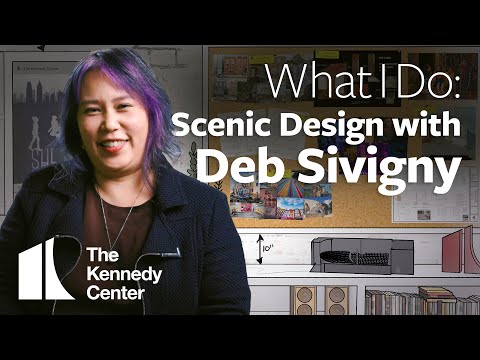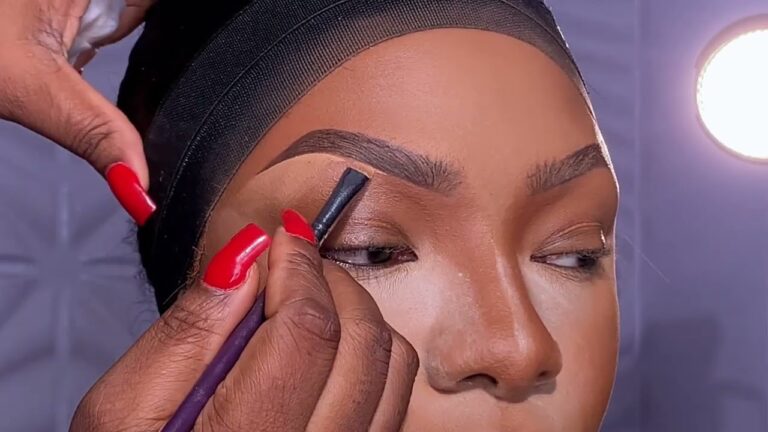Discover the Creative World of Scenic Design: Job Description and Salary

Scenic Designer Job Description Template
Scenic Designer is a professional who is responsible for creating the visual environment of a theatrical production or any other performance. They work closely with directors, producers, and other members of the production team to design and execute the set, props, and overall aesthetic of the performance. The job of a Scenic Designer involves researching, interpreting scripts, and developing a concept for the production. They create scale models, sketches, and floor plans to present their ideas to the production team. Once the concept is approved, they oversee the construction and installation of the set, ensuring that it meets the artistic vision and technical requirements of the performance. Scenic Designers collaborate with other members of the creative team, such as costume designers, lighting designers, and sound designers, to create a cohesive visual experience. They also work closely with the stage manager and technical crew to ensure that the set changes and transitions are smooth and efficient. Attention to detail and strong artistic skills are essential for this role. Scenic Designers must have a deep understanding of visual aesthetics, color theory, and the practical aspects of set construction. They should be proficient in using design software and have knowledge of different materials and techniques used in set design. In summary, a Scenic Designer is responsible for creating the visual world of a performance, bringing the script to life through the design and execution of the set. They play a crucial role in enhancing the audience’s experience and contributing to the overall success of the production.Scenic Designer Responsibilities
Scenic Designer Requirements
How Much Does A Scenic Designer Make?
Scenic Designer Salary
| Country | Average Salary (USD) |
|---|---|
| United States | $55,000 |
| United Kingdom | £35,000 |
| Australia | AUD 65,000 |
| Canada | CAD 50,000 |
Scenic designers are professionals who create the visual elements of a theatrical or scenic production. They design and oversee the construction of sets, props, and other visual elements that help bring a production to life. The salary of a scenic designer can vary depending on factors such as experience, location, and the type of production they are working on.
In the United States, the average salary for scenic designers is around $55,000 per year. In the United Kingdom, the average salary is about £35,000. In Australia, scenic designers can expect to earn around AUD 65,000 annually. In Canada, the average salary for scenic designers is approximately CAD 50,000.
It’s important to note that these figures are just averages and can vary significantly based on individual circumstances. Factors such as the size and reputation of the production company, the designer’s level of experience and expertise, and the demand for scenic designers in a particular region can all impact salary.
Scenic Designer Salaries by Country
Top Paying Countries for Scenic Designer
| Country | Average Salary (USD) |
|---|---|
| United States | 60,000 |
| Switzerland | 55,000 |
| United Kingdom | 50,000 |
| Australia | 45,000 |
| Canada | 40,000 |
Scenic designers are highly valued in the entertainment industry and their salaries vary across different countries. According to available data, the top paying countries for scenic designers are the United States, Switzerland, United Kingdom, Australia, and Canada. In the United States, scenic designers can expect to earn an average salary of $60,000 per year. Switzerland follows closely with an average salary of $55,000, while the United Kingdom offers around $50,000 on average. Australia and Canada round out the list with average salaries of $45,000 and $40,000 respectively. These figures may vary based on experience, qualifications, and demand for scenic designers in each country.
A video on the topic Scenic Designer
Video Source : Kennedy Center Education Digital LearningInterview Questions for Scenic Designer
1. Can you briefly explain what a scenic designer does?
A scenic designer is responsible for creating the visual concept and overall look of a theatrical production or event. They work closely with the director and other members of the production team to design and construct the sets, props, and other visual elements that enhance the storytelling.
2. What qualifications or skills are necessary to become a scenic designer?
To become a scenic designer, a degree in theater, set design, or a related field is typically required. Additionally, strong artistic and design skills, knowledge of construction techniques, and the ability to collaborate effectively with others are important qualifications.
3. How do you approach the design process for a new production?
I begin by thoroughly reading the script and discussing the director’s vision for the production. Then, I research the time period, location, and any other relevant factors that may influence the design. Next, I create sketches and models to visualize and communicate my ideas. Finally, I collaborate with the production team to refine the design and bring it to life.
4. Can you describe a particularly challenging project you’ve worked on and how you overcame the challenges?
One challenging project I worked on was a production set in a futuristic world with complex and unconventional architecture. To overcome the challenges, I conducted extensive research on futuristic designs and worked closely with the set construction team to find innovative solutions. We utilized new materials and techniques to create the desired effect, resulting in a visually stunning set.
5. How do you ensure that your designs align with the director’s vision?
I believe in open and frequent communication with the director throughout the design process. I actively listen to their ideas, ask for feedback, and make adjustments as necessary to ensure that the design reflects their vision for the production. Collaboration and a shared understanding of the director’s goals are key to a successful design.
6. Can you discuss the importance of collaboration in your role as a scenic designer?
Collaboration is essential in my role as a scenic designer. I work closely with the director, lighting designer, costume designer, and other members of the production team to ensure that all visual elements harmonize and support the overall artistic vision. By collaborating effectively, we can create a cohesive and impactful production.
7. How do you stay updated on current trends and techniques in scenic design?
I attend industry conferences, workshops, and exhibitions to stay updated on current trends and techniques in scenic design. Additionally, I follow industry publications, participate in online forums, and engage in discussions with fellow designers to exchange ideas and learn from each other’s experiences.
8. Can you discuss the role of technology in scenic design?
Technology plays a significant role in scenic design, providing new possibilities for creating immersive and dynamic environments. Tools such as computer-aided design (CAD) software, 3D modeling, and virtual reality allow designers to visualize and refine their concepts. Additionally, advancements in lighting and projection technology have expanded the creative options available to scenic designers.
9. How do you handle budget constraints when designing a production?
When faced with budget constraints, I prioritize the design elements that are essential to the storytelling and find creative ways to achieve the desired look within the available resources. This may involve repurposing existing materials, seeking cost-effective alternatives, or collaborating with the production team to find efficient solutions without compromising the artistic vision.
10. What is the most rewarding aspect of being a scenic designer?
The most rewarding aspect of being a scenic designer is witnessing the transformation of a design concept into a tangible and immersive world on stage. Seeing the actors and audience interact with and be transported by the set and visual elements is incredibly fulfilling. It is a collaborative art form that has the power to evoke emotions and tell stories in a unique and impactful way.






